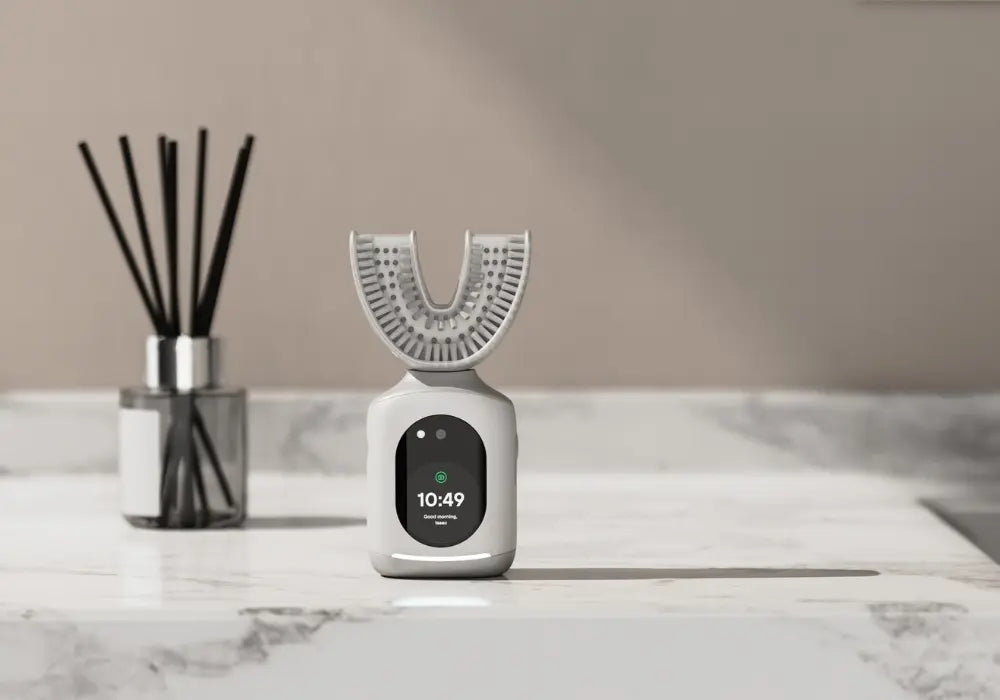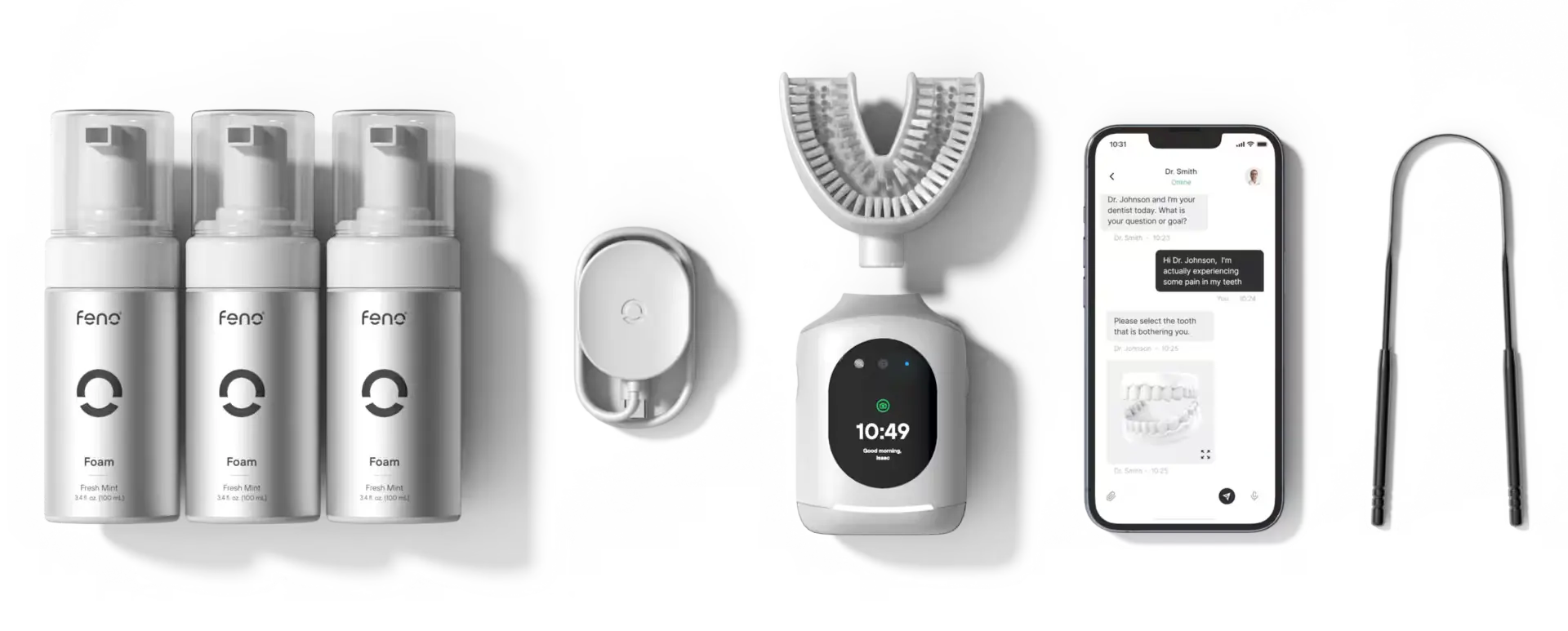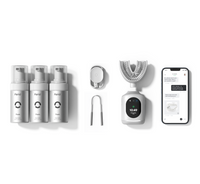
11 min read
The Rise of At-Home Oral Scanning and What It Means for Your Teeth
The way we care for our teeth is rapidly changing. With new technology entering homes, oral care at home is no longer limited to brushing and flossing. Today, devices that once belonged in a dental office are now being used in everyday bathrooms. From high-tech toothbrushes to tools that scan your teeth, people are finding new ways to protect their smiles. These devices also give you detailed insights into your oral health, helping you spot problems early and stay ahead of dental issues without leaving your house.
Understanding Remote Dental Monitoring Systems
High-Resolution Tooth Images
At the heart of remote care are dental scanners designed to create detailed images of your teeth and gums. These devices utilize advanced optics to capture precise digital impressions, which are significantly more comfortable than traditional molds. Most scanners rely on handheld wands that are easy to guide inside your mouth, capturing thousands of frames per second. The result is a high-resolution 3D model that provides dental professionals with a comprehensive view of your oral structure.
Secure Data Transmission to Dental Professionals
Once your scan is complete, the system transmits the data using encrypted networks to ensure your privacy. This process allows remote dental monitoring without compromising your sensitive health information. Your dental provider can access your files in real time, offering professional insights from anywhere. Because of this secure connection, patients no longer need to visit a clinic in person for basic assessments. Instead, regular updates can be sent directly to a provider’s dashboard, enabling timely care when issues arise.
Early Detection of Gum Health Issues
By examining detailed scans regularly, dental professionals can detect small problems before they become significant. One key advantage of these tools is the early detection of gum inflammation and thinning enamel, both of which can be difficult to spot without assistance. With the aid of modern dental imaging tools, minor issues that were once overlooked are now flagged for attention. This results in faster treatment and improved outcomes. Preventive care becomes more precise because tiny changes are tracked over time.
Reducing In-Office Visits
With consistent remote check-ins, patients receive evaluations without needing to take time off work or sit in waiting rooms. That’s especially helpful for routine care or post-treatment follow-ups. Thanks to oral tech for patients, it’s possible to maintain communication with your provider and stay on top of your health goals while cutting down on unnecessary appointments. This shift not only saves time but also helps clinics focus more resources on complex cases that require hands-on treatment.
Smart Toothbrushes and Real-Time Oral Feedback
Toothbrush with Dental Apps
These high-tech brushes sync with smartphones to track things like duration, pressure, and motion. Users receive instant alerts if they're brushing too hard or missing areas. Some apps even include personalized goals or achievement badges to motivate consistency. This added layer of information transforms brushing into an interactive experience.
Smart Toothbrush Usage
Many people are unaware that how they brush is just as important as how often they do it. Through smart toothbrush usage, individuals can learn exactly how much pressure to apply and how long to spend in each quadrant of the mouth. These devices feature built-in sensors that monitor movement patterns and alert users when adjustments are needed. Some models even adapt to your brushing style and offer coaching tips to help improve your overall technique.
Benefits of Vibrating Toothbrush Technology
Powerful tools, such as ultrasonic toothbrushes or those with vibration functions, elevate oral care to another level. These use rapid movements to break up plaque and remove bacteria that manual brushes can miss. The vibration also helps stimulate the gums, promoting better circulation and health. These technologies offer a more effective clean with less physical effort, making them ideal for people who struggle with traditional brushing.
Common Brushing Mistakes
Brushing your teeth might seem like second nature, but even those who brush regularly often make mistakes that can compromise their oral health. Below are key brushing mistakes these tools help prevent:
- Brushing Too Hard: Many people believe that brushing harder will lead to a deeper clean, but excessive pressure can do more harm than good. Smart toothbrushes help prevent this by using pressure sensors that detect when you’re pressing too hard and instantly alert you, often with a blinking light or vibration change. These gentle reminders encourage users to adopt a lighter touch while still maintaining effective plaque removal. Some advanced models even automatically reduce intensity to protect your gums while still cleaning thoroughly.
- Missing Areas: It’s easy to focus on the teeth you can see and overlook those harder-to-reach places. Unfortunately, these neglected spots are often where plaque builds up most. Smart toothbrushes equipped with position detection and built-in mapping technology can track your brushing coverage in real time. Many models sync with a companion app to show you a visual breakdown of which areas you’ve brushed thoroughly and which you’ve skipped. This data helps users consistently improve coverage and avoid developing habits of neglecting specific zones. Some devices even issue alerts or suggestions during brushing sessions, encouraging users to revisit missed areas before finishing. This level of guidance fosters more effective brushing routines and promotes thorough cleaning, reducing the risk of cavities or tartar in hard-to-reach areas.
- Brushing Too Quickly: The average person brushes their teeth for less than the dentist-recommended two minutes, often rushing the process and leaving behind stubborn plaque. Uneven brushing may feel like a timesaver, but it reduces the effectiveness of even the best toothbrush. Smart toothbrushes solve this issue by incorporating built-in timers that guide users through the correct duration, often in 30-second intervals per quadrant of the mouth. Some brushes pause or vibrate to signal when it’s time to switch sections, ensuring balanced coverage. This structured pacing turns brushing into a more intentional, focused activity rather than a mindless task. Some premium models also connect to apps that track consistency over days or weeks, encouraging users to maintain proper timing as a habit.
- Incorrect Angles: Holding your toothbrush at the wrong angle can result in missed debris along the gumline and between teeth. Proper brushing technique involves angling the brush at roughly 45 degrees toward the gumline and using gentle, circular motions. Many people are unaware when their angles are off, especially with manual brushing. Smart toothbrushes address this by providing real-time feedback on brush positioning. Some devices use sensors that detect tilt and orientation, alerting users when their technique deviates from optimal positioning. Others guide users with visual cues in an app that shows angle improvements over time. By correcting technique on the spot, these brushes help users adopt better brushing habits without needing direct instruction from a hygienist.
- Brushing Unevenly: Most people tend to spend more time brushing one side of their mouth without even realizing it. These brushes typically divide the mouth into four or six zones, providing a balanced roadmap during brushing sessions. When one area receives too little or too much focus, the device alerts the user to adjust. Some advanced models also offer post-brushing summaries, highlighting which sections were under-brushed. This not only helps users improve symmetry but also builds awareness of unconscious habits that can compromise oral health.
By actively preventing these common mistakes, smart toothbrushes serve as daily oral hygiene coaches. They empower users to make small but impactful improvements that lead to a stronger understanding of proper technique.
Innovations in Automated and Self-Brushing Systems
What Is a Self-Brushing Toothbrush
Unlike traditional brushes that rely on hand motion, these devices feature mouthpiece-style designs that surround the teeth, cleaning them simultaneously with built-in bristles and micro-vibrations. They’re invaluable for those with limited hand mobility, children learning to brush, or people with hectic routines who often skip proper oral hygiene. Smart dental devices like these provide equal access to proper care, empowering more people to manage their oral hygiene with comfort.
Integration of Brushing Data with Mobile Health Apps
Many smart toothbrush systems now integrate seamlessly with general wellness platforms, providing users with a more comprehensive view of their health. This connection enables data from brushing sessions to be displayed alongside other personal health metrics, creating opportunities for enhanced insights and preventive care. As these devices collect real-time information, syncing that data with mobile health apps enables patterns to be tracked over time. With this setup, users can receive tailored guidance and share oral hygiene performance with dental providers. Such a level of connectivity helps reinforce habits that support overall wellness.

Time-Saving Tools
Technology is transforming daily oral care into a faster, more consistent routine. By reducing the manual effort and guesswork involved in brushing, these tools make it easier for users to maintain good habits even when pressed for time. Automated features ensure that every part of the mouth receives adequate attention, regardless of the user’s schedule. For people who tend to skip brushing when they’re rushed, these systems remove barriers and promote better hygiene outcomes.
Personalized Dental Care and Natural Tooth Support
Tailoring Recommendations
With access to data from daily brushing, modern platforms can analyze patterns and suggest specific improvements. This level of customization goes beyond generic advice and helps you address your unique oral care challenges. If certain areas of your mouth need more attention or if your brushing speed is inconsistent, these insights are flagged and followed by targeted suggestions. The ability to study trends and adjust routines helps users develop stronger habits.
Encouraging Natural Tooth Care Habits
People are becoming more conscious of using safer products for oral hygiene. Establishing healthy habits doesn’t have to be difficult. These daily actions help support natural oral care from home:
- Use Fluoride-Free Toothpaste with Remineralizing Agents: Many people are now choosing to avoid fluoride due to concerns about overexposure, especially in communities where it’s already present in tap water. Fortunately, there are fluoride-free alternatives that still offer strong enamel protection through natural remineralizing agents like hydroxyapatite, calcium phosphate, or xylitol. These ingredients help rebuild and fortify tooth enamel, reduce sensitivity, and prevent cavities without synthetic additives. Using such toothpaste daily allows you to support enamel regeneration in a gentler, body-safe way. Some formulas include botanical extracts, such as green tea or neem, for added antibacterial and anti-inflammatory benefits. Integrating these kinds of toothpaste into your routine not only supports your long-term dental health but also aligns with broader lifestyle goals of reducing chemical exposure.
- Brush with a Soft-Bristled Toothbrush: Soft bristles flex more easily, reaching into crevices without scratching enamel or irritating the gumline. This is especially important for people with sensitive teeth or existing gum issues, as it minimizes trauma while still providing a thorough clean. Additionally, soft-bristled brushes help reinforce gentler brushing techniques, which are crucial for maintaining the natural balance of your mouth’s microbiome. Pair a soft-bristled brush with slow, circular motions and avoid using excessive pressure. This approach works in harmony with the body’s natural defenses and supports healthier gums and a more comfortable daily routine.
- Switch to Non-Stripping Mouth Rinses: Many conventional mouthwashes are alcohol-based and formulated to kill bacteria indiscriminately, but this can disrupt the natural balance of your oral microbiome, stripping away protective bacteria along with the harmful ones. For those pursuing a more natural approach to oral care, it’s better to use gentle mouth rinses made with soothing ingredients such as aloe vera, coconut oil, xylitol, or herbal extracts like chamomile and sage. These formulations freshen breath and reduce harmful bacteria without drying out the mouth or causing irritation. Maintaining moisture in the mouth is crucial for healthy saliva flow, which plays a vital role in neutralizing acids and protecting natural enamel. Alcohol-free rinses are beneficial for individuals with sensitive tissues or prone to dry mouth.
With the right toothpaste, toothbrush, and mouth rinse, you can create an environment that fosters long-term dental health without relying on aggressive chemicals or techniques. Thoughtful shifts can make a big impact over time.
The modern dental experience is evolving into a partnership between at-home practices and clinical oversight. Devices that sync brushing behavior and hygiene patterns provide dentists with more accurate and timely information. This bridge helps professionals guide patients with better advice, rooted in actual behavior rather than memory or assumptions. Whether it’s through a toothbrush with health tracking or a remote scanner, this two-way interaction supports a proactive care model. Rather than reacting to dental problems after they arise, both patients and providers can now work together to prevent them, making oral care more personalized.
Share




